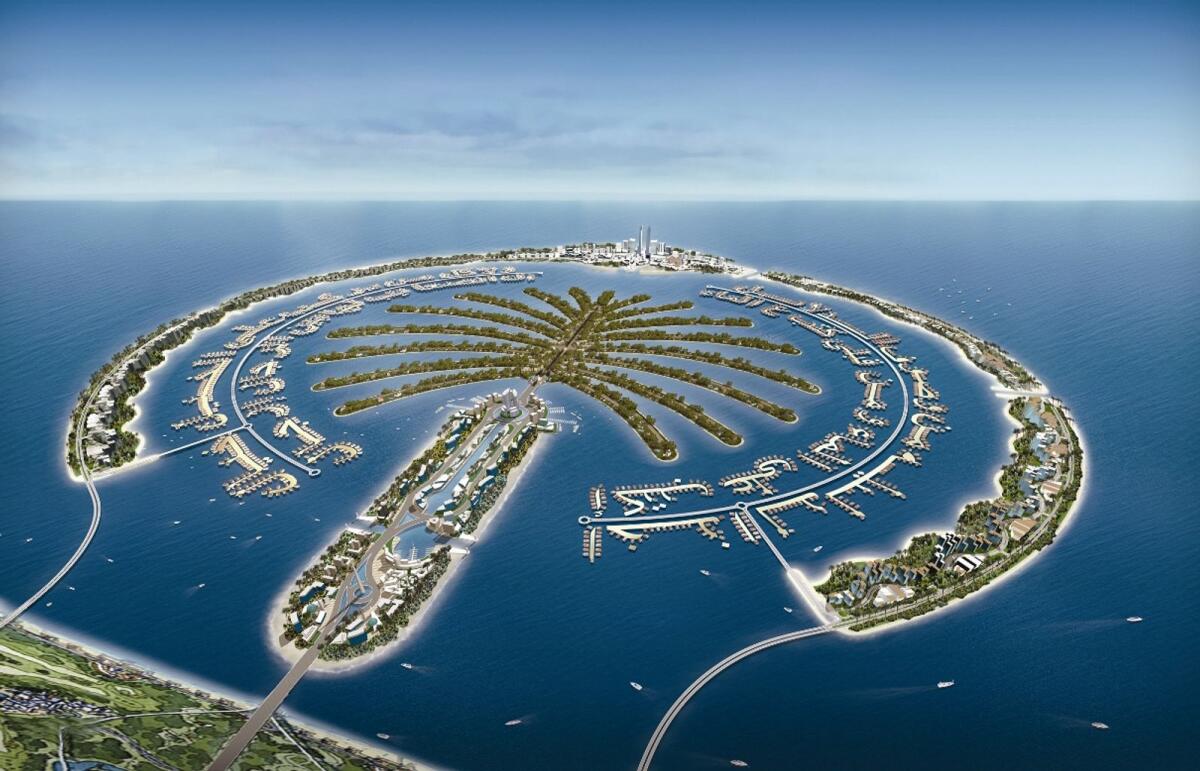Introduction
In 2002, a vision was set by the Dubai goverment to transform Dubai’s coastline into an architectural masterpiece that could be seen from space. This vision led to the creation of the Palm Islands, of which Palm Jebel Ali holds a special place. Palm Jebel Ali was designed to be more than just a marvel of engineering, but also to be an incredibly vibrant community, blending luxurious living with a vibrant tourism area. The story of its development illuminates Dubai’s ambitious urban development strategies, which have faced both significant successes and challenges.
The Impact of the Global Financial Crisis in 2008
Palm Jebel Ali’s journey has been a difficult one. The project, launched by renowned real estate developer Nakheel in 2002, embarked on a high note. It promised to outshine its predecessor with more residential units, entertainment zones, and commercial spaces. However, the global financial crisis of 2008 had a profound impact on the real estate market worldwide, and Dubai was no exception. The crisis brought about a reevaluation of many ambitious projects, with Palm Jebel Ali facing delays and a temporary development halt. Investment slowed considerably as the world struggled with economic uncertainties, affecting construction and investment momentum.
Palm Jebel Ali vs Palm Jumeirah
While both islands share the conceptual DNA of luxury and innovation, there are distinct differences between Palm Jebel Ali and Palm Jumeirah. Palm Jumeirah, the first of its kind, quickly became a symbol of Dubai’s luxury real estate market. It attracts celebrities, tourists, and investors from around the globe. Its success was a blend of novelty, strategic marketing, and the allure of beachfront luxury living and tourism.
On the other hand, Palm Jebel Ali was designed to be significantly larger. It aims to host a wide array of facilities, including water theme parks, sea villages, and a wide range of residential options. The vision for Palm Jebel Ali was not just to replicate Palm Jumeirah’s success but to elevate it to the next level of comprehensive development. This ambition, while grand, also meant that the stakes and challenges were high, particularly in light of the economic downturn.
Palm Jebel Ali Area Specifications
Palm Jebel Ali was envisioned to dwarf its predecessor, Palm Jumeirah, in both scale and scope. Spanning approximately 91 kilometres of newly constructed palm islands featuring seven islands and 16 fronds, it was designed to accommodate over 250,000 people upon completion. The island was characterised by its signature palm tree shape. It was surrounded by a circular breakwater that protected the island and served as additional development space.
Key features planned for Palm Jebel Ali include:
- Residential Zones: Aimed at housing thousands in luxury villas, townhouses, and apartments. These residences offer stunning views of the Persian Gulf and luxurious amenities.
- Tourist Attractions: With water theme parks, eco-tourism hotspots, and entertainment facilities, Palm Jebel Ali aims to become a major global tourist destination.
- Commercial Spaces: Designed to support residential and tourist populations with shopping centres, restaurants, and office spaces, facilitating a self-sustaining community.
- Marine Life: The project placed a strong emphasis on incorporating aquatic life into its design, including plans for a sea village that would allow for direct interaction with the marine environment.
Current Status of Palm Jebel Ali
Today, Palm Jebel Ali’s status is a topic of much speculation and anticipation. After the hiatus induced by the financial crisis, there have been periodic announcements and rumours about the project’s revival. Dubai’s real estate market has recovered, and with Expo 2020, ambitious projects have been renewed. However, as of the latest updates, large-scale development on Palm Jebel Ali has yet to resume at full pace.
Palm Jebel Ali’s current status reflects cautious optimism. The project remains part of Dubai’s long-term development and tourism vision. A number of potential investors and observers are eagerly looking forward to off-plan property sales, which started in September 2023. Investors are committing to a 20% down payment for homes, ranging from AED 3.5 million to AED 10 million, significantly higher than the typical 5-10% down payment in the Dubai property market.
In November 2023, Palm Jebel Ali Villas‘ sales exceeded AED 5.4 billion in less than 40 days. This total includes approximately 20% in down payments from buyers, indicating actual sales close to AED 1 billion in under two months.
Palm Jebel Ali’s history is a narrative of grand ambitions, unforeseen challenges, and revival promises. It encapsulates the dynamic nature of Dubai’s real estate market and the UAE’s vision for the future. While the full realisation of Palm Jebel Ali’s potential is still on the horizon, its story so far is a compelling chapter in the larger story of Dubai’s transformation into a global hub of tourism, innovation, and luxury living. As the world watches, Palm Jebel Ali continues to evolve, becoming another jewel in Dubai’s illustrious urban landscape.

